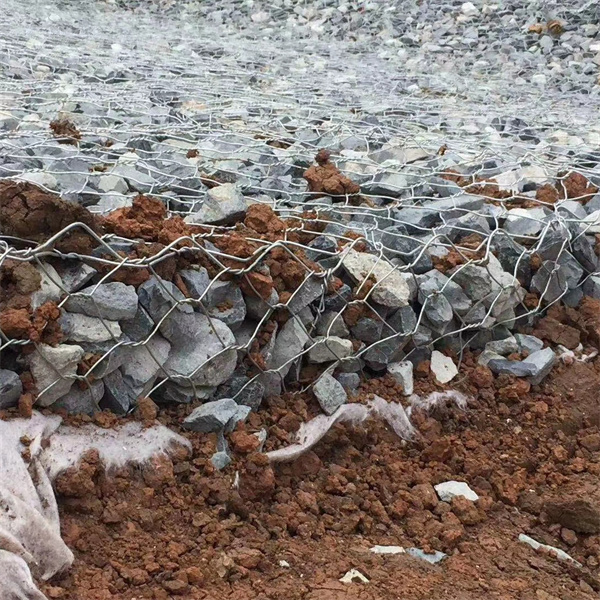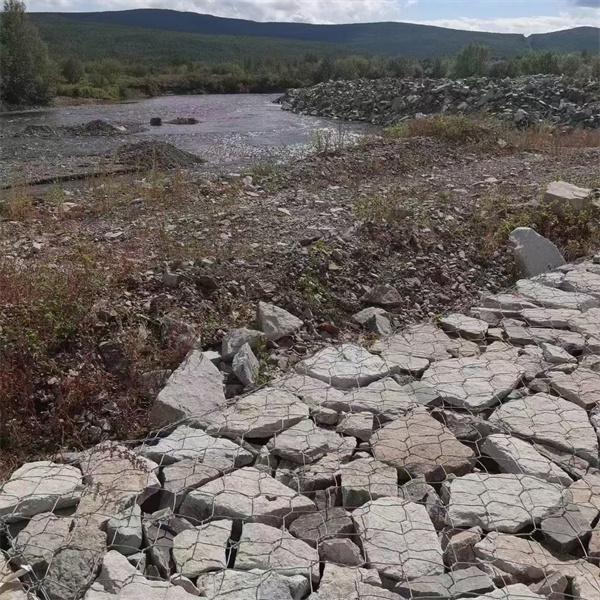Jul . 05, 2025 07:20 Back to list
High-Quality Stone Cage Net from Trusted Factories Reliable Stone Cage Net Suppliers
- Introduction to Stone Cage Net
- Technical Advantages and Innovations
- Market Analysis and Impact
- Comparison of Major Suppliers and Factories
- Customization Options and Solutions
- Real-World Application Cases
- Conclusion: The Future of the Stone Cage Net Industry

(stone cage net)
Introduction to Stone Cage Net: An Innovative Structural Solution
Stone cage net, commonly known as gabion netting, is a transformative solution in civil engineering and landscaping applications. Developed as a mechanism to control soil erosion, support slopes, and facilitate sustainable infrastructure development, the stone cage net
has become a standard component for a range of projects, from riverbank reinforcing to architectural landscapings.
Over the past decade, the worldwide demand for stone cage nets has grown by an average of 8.3% annually, powered by the increasing need for eco-friendly and cost-effective construction materials. This demand surge has catalyzed innovation within the industry, fostering the emergence of both established stone cage net suppliers and new factory players. The precision in mesh weaving, durability of wire coatings, and versatility in design have all improved significantly, making modern stone cage nets substantially more resilient and adaptable than their predecessors.
Technical Advantages and Innovations
The technical leap in stone cage net manufacturing is evident in several key attributes:
- Material Quality: Contemporary stone cage nets predominantly utilize galvanized steel or PVC-coated wire, boasting a minimum tensile strength of 380 N/mm². This high-grade material extends field service life by up to 35 years even in corrosive environments.
- Production Efficiency: Automated weaving technologies now enable production speeds exceeding 2000 m² per day for large-scale factories, ensuring timely fulfillment of global orders.
- Load Capacity: Advanced mesh configurations achieve static load tolerances up to 50 kN/m², allowing for robust slope and retaining wall constructions.
- Sustainable Design: Biodegradable geotextile integration and modular system assembly allow for rapid installation and minimal landscape disruption.
Market Analysis and Impact
The worldwide stone cage net market is valued at over $1.42 billion in 2023, with expectations to break the $2 billion mark by the end of 2027. Primary growth drivers include infrastructure upgrades in Asia-Pacific, increased environmental regulations in Europe, and ongoing flood mitigation efforts in North America. Stone cage net suppliers are now focusing on delivering not just material but a full spectrum of engineering services, including site assessment, design customization, and installation support. Factories in emerging economies have ramped up production capacity to capitalize on the surging demand, though the highest revenue per product remains centered among established factories with advanced technology and global distribution networks. According to the International Gabion Association (IGA), nearly 68% of large-scale infrastructure projects in 2023 specified the use of certified stone cage net products.
Comparison of Major Suppliers and Factories
Selecting the right supplier or factory is critical to ensure structural integrity, longevity, and cost efficiency. Below is a comparison table of leading stone cage net suppliers and factories, based on parameters such as production capacity, certification standards, lead time, and product warranty.
| Organization | Annual Output (tons) | Certification | Lead Time (weeks) | Warranty (years) | Main Export Markets |
|---|---|---|---|---|---|
| EcoMesh Global Ltd | 48,000 | ISO 9001, CE | 4-5 | 12 | Europe, North America, Asia |
| GreenEarth Stone Cage Net Factory | 38,500 | ISO 14001, SGS | 3-4 | 10 | Asia, Middle East |
| RiverGuard Mesh Suppliers | 25,200 | ISO 9001 | 2-3 | 8 | North America, Africa |
| Atlas Engineering Factories | 31,000 | ISO 9001, EN 10223-8 | 5-6 | 15 | Europe, Oceania |
The table illustrates that while some stone cage net suppliers prioritize fast delivery, others invest more in product longevity and market diversity. For instance, EcoMesh Global Ltd leads the industry by combining high output, multiple certificates, and the longest warranty period for demanding projects.
Customization Options and Solutions
Factories are now offering extensive customization of stone cage net products to cater to variable geological conditions and aesthetic requirements:
- Mesh Size & Shape: Clients may specify hexagonal, rectangular, or double-twist mesh in a range of aperture sizes (usually 60 mm to 120 mm).
- Wire Thickness: Standard options range from 2.7 mm to 4.0 mm, allowing for adaptation to anticipated load and environmental exposure.
- Coating Types: Choices between hot-dip galvanization, PVC, or zinc-aluminum alloy coatings for corrosion resistance.
- Modular Assembly: Pre-fabricated panel and cage systems for fast on-site installation and minimal labor.
- Project-Specific Engineering: Many leading factories provide CAD modeling, site simulation, and logistics planning embedded within the supply contract.
Real-World Application Cases
Case 1: Riverbank Reinforcement in Germany
The 2022 Rhine River project utilized 12,000 m² of galvanized stone cage net to stabilize 3 km of riverbank. Post-installation studies by the project's engineering team found a 96.4% reduction in seasonal soil erosion over the first year.
Case 2: Highway Slope Protection in Brazil
After a series of landslides, a 4.5 km stretch of motorway was fortified using double-twist stone cage nets. Traffic disruptions dropped by 87% according to local infrastructure authorities, and maintenance costs halved within 18 months.
Case 3: Green Infrastructure Park in Australia
The construction of an urban park featured sculptural gabion walls and retaining features. Stone cage net suppliers delivered pre-filled modular assemblies, reducing overall construction time by four weeks and labor costs by over $50,000.
These cases validate not only the structural integrity and sustainability of the solutions but also the pivotal role of responsive supply chains and tailored engineering.
Conclusion: The Future of the Stone Cage Net Industry
As environmental challenges escalate and urban development accelerates, the market outlook for the stone cage net industry remains highly promising. Continuous investments in material science, automation, and supply chain integration will further differentiate leading stone cage net suppliers from their competitors. The synergy among advanced factory processes, innovative customization, and data-driven engineering will empower future projects—ensuring that stone cage net solutions not only meet but consistently exceed safety, ecological, and economic benchmarks.

(stone cage net)
FAQS on stone cage net
Q: What is a stone cage net?
A: A stone cage net, also known as a gabion, is a wire mesh container filled with stones used for retaining walls and erosion control. It is widely used in civil engineering projects. Its structure allows for durability and flexibility.Q: How do I find reliable stone cage net suppliers?
A: Look for suppliers with good reviews, certifications, and experience in the industry. Compare their product quality, pricing, and delivery options before purchasing. Always request samples or references if possible.Q: What are the advantages of sourcing from stone cage net factories directly?
A: Buying directly from factories ensures lower prices and more customization options. It also guarantees better quality control and faster production times. This approach is ideal for bulk orders.Q: Are stone cage net factories able to provide OEM or customized services?
A: Many stone cage net factories offer OEM and customization services according to specific project requirements. They can adjust material, size, and weaving patterns. Always confirm customization options in advance.Q: How long does it typically take to receive an order from a stone cage net supplier?
A: Delivery times vary based on order quantity and supplier location but usually range from 2 to 6 weeks. Express shipping may be available for urgent orders. Always discuss lead time before confirming your order.-
Visualizing Gabion 3D Integration in Urban Landscapes with Rendering
NewsJul.23,2025
-
The Design and Sustainability of Gabion Wire Mesh Panels
NewsJul.23,2025
-
The Acoustic Performance of Gabion Sound Barriers in Urban Environments
NewsJul.23,2025
-
Mastering the Installation of Galvanized Gabion Structures
NewsJul.23,2025
-
Gabion Boxes: Pioneering Sustainable Infrastructure Across the Globe
NewsJul.23,2025
-
Custom PVC Coated Gabion Boxes for Aesthetic Excellence
NewsJul.23,2025
-
Installation Tips for Gabion Wire Baskets in Erosion Control Projects
NewsJul.21,2025






